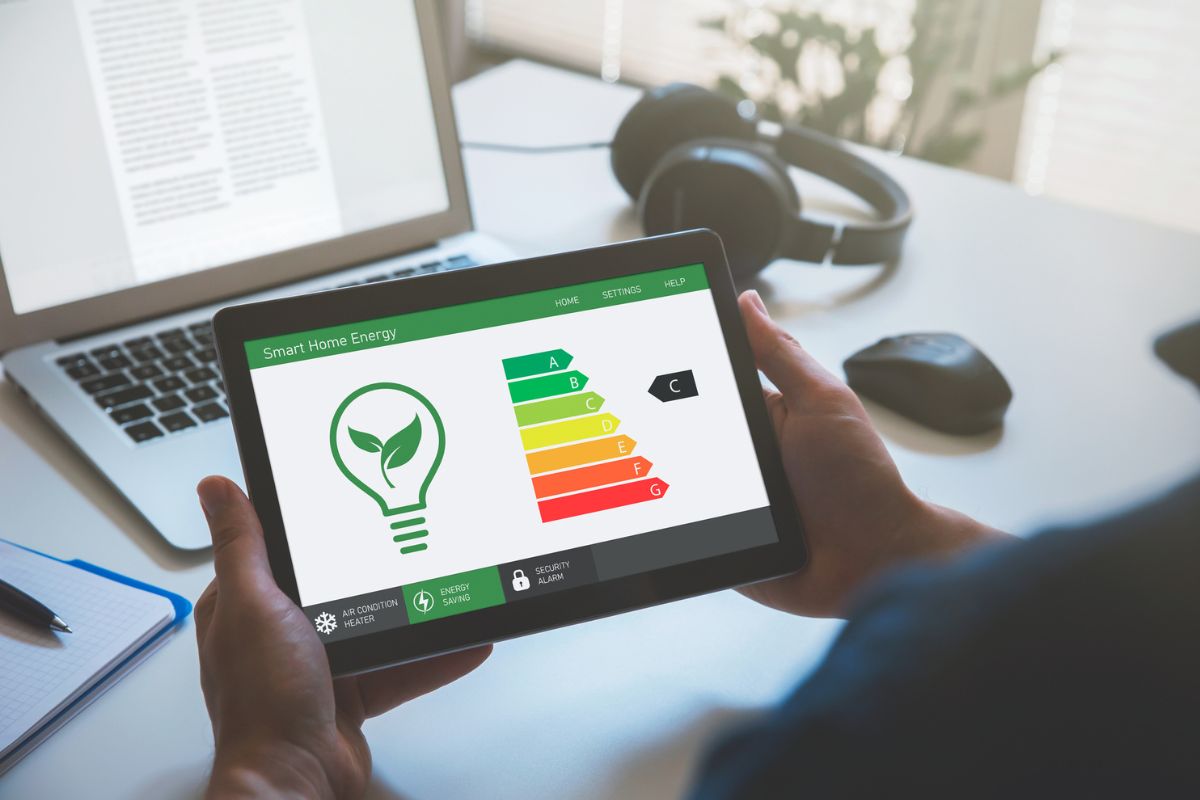Introduction
If you want to reduce your business’s energy consumption, looking at the efficiency of your appliances is a good place to start. From keeping your building at a comfortable temperature, to powering your workforce with cups of tea and coffee, there are lots of different appliances at work, contributing to your energy bills.
Our guide takes you through how to calculate exactly how much energy your appliances are using, which appliances use the most electricity, and how your business can be more energy efficient.
How to Measure Which Appliances Use the Most Energy
The easiest way to find out which electrical appliances use the most electricity is by looking at their power rating. Most appliances will have a power label that tells you how many Watts (W) they use, as well as an energy efficiency rating from A-G (with A being the most efficient). This can be found either on the appliance itself, on the original box or packaging it came in, or in the instruction manual.
A Kilowatt (kW) is one thousand Watts, and a Kilowatt-hour (kWh) is equivalent to power consumption of one thousand watts for one hour. In the UK, energy suppliers measure electrical consumption in Kilowatt-hours and then charge a unit price based on this.
To calculate how much energy an appliance uses, you can do the following equation:
Energy (kWh) = Power (W) × Time (hours) ÷ 1000
For example, if you use a 50kW laptop for 8 hours, the energy consumed would be:
50W x 8 hours = 400W ÷ 1000 = 0.4 kWh
Once you have calculated the kWh your appliance uses, you can then use this to work out cost by multiplying the figure by the cost per kWh that you pay. (This can usually be found on your electricity bill).
Therefore, if your cost per kWh is 25p, it would cost you 10p per day or 1.25p per hour to operate your laptop.

What Electrical Appliances Use the Most Energy?
Energy use is different for all businesses, depending on factors such as size, nature of operations and opening hours. For example, an office is likely to use appliances such as printers more frequently and for longer durations than a restaurant. But a restaurant will use fridges and dishwashers more frequently than an office.
Knowing which appliances use the most electricity will help you to identify the best places to start making energy savings.
Below are some of the most common energy-consuming appliances used by businesses and a guide to how much energy they may be using.
- Servers – the amount of energy a server uses will vary depending on size, demand and workload as well as the number of servers you use. However, the average daily consumption of a server is around 500-1200W per hour, which makes them big consumers, especially if your business uses multiple servers. They are, however, designed to be switched off at the end of the day, so ensuring they are only running when needed can help you save energy.
- Air conditioners – cooling systems are one of the biggest energy-hungry appliances found in most businesses, using on average 4000W per hour, making them one of the least energy efficient appliances.
- Desk fans – speaking of cooling, desk fans make a great alternative to air conditioning units and consume a fraction of the energy. The average desk fan uses around 50w of electricity per hour.
- Desktop computers – in a typical office, desktop computers will run for around 8 hours a day. Desktop computers will use around 60-300W per hour, with monitors using a further 35-80W. This may not seem like much, but when you consider an office of 50+ employees, many using multiple screens, it can quickly add up!
- Laptops –switching to laptops is an easy way to reduce the amount of electricity your computers use, with a laptop using around 50w of electricity per hour.
- Lighting – the amount of electricity your lighting systems use will depend on the space you are lighting, as well as the type of lighting you use. For example, on average, incandescent light bulbs use around 60W of electricity, whereas LED bulbs use around 10W. When purchasing light bulbs and fixtures, you can also look at energy ratings or opt for specific energy saving bulbs.
- Printers and photocopiers – the two main types of printers- inkjet and laser-use very different amounts of electricity. The average office inkjet printer uses between 300 and 500W per hour of printing, whereas the average laser printer uses up to 1000W per hour of printing. However, both will use considerably less energy whilst on standby.

How to Save Energy in Your Business
As well as knowing what electrical appliances use the most electricity, there are a number of simple steps you can take to help save energy in your business.
- Complete a business energy audit – this is a great way to get a deeper understanding of your business energy. By carrying out a detailed energy audit, looking at all aspects of your business operations, you can identify areas where changes and savings can be made.
- Keep up with repairs – faulty appliances are known to use more energy than needed, so ensuring that everything is in good working order is important in ensuring you are not wasting energy. Similarly, keeping your building in good condition, e.g. fixing draughts, can also help reduce your reliance on costly heating and cooling systems.
- Upgrade your building – from switching to LED lighting, to using eco-friendly insulation materials, there are lots of easy upgrades you can make to your building to help cut your consumption and boost your efficiency.
- Get staff on board – making sure your team are up to speed with any energy saving initiatives you implement is an important step in ensuring your success. Whether that involves a sustainability training course, or just some gentle reminders, having everyone working together is key.
- Check out our energy saving guides – we have a range of guides designed to help your business save energy, whether you’re a small startup or a multi-site chain, our guides are full of tailored tips and industry-specific advice for your business.
Looking For More Ways to Save?
If you’re ready to start your energy saving journey, we can help! Get your free quote from Yü Energy today and find out how much you could be saving, in just 30 seconds.

 0115 975 8258
0115 975 8258

